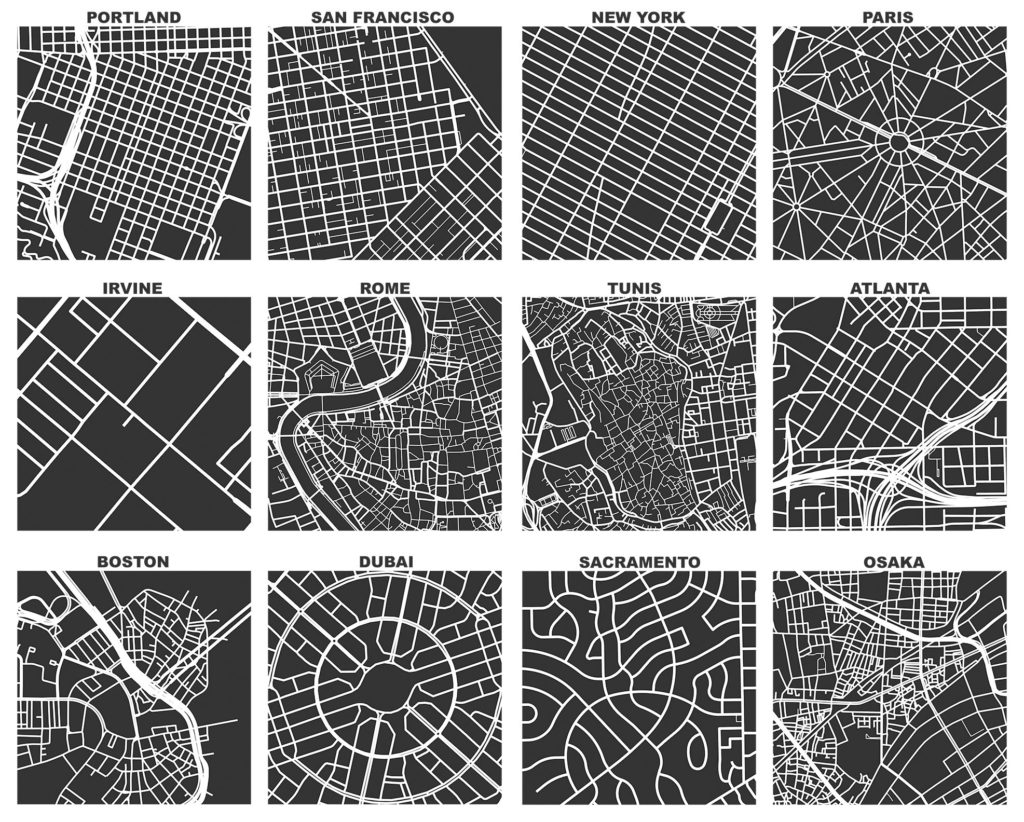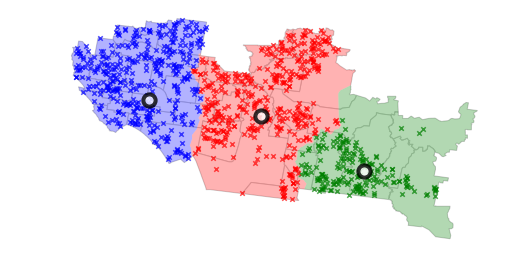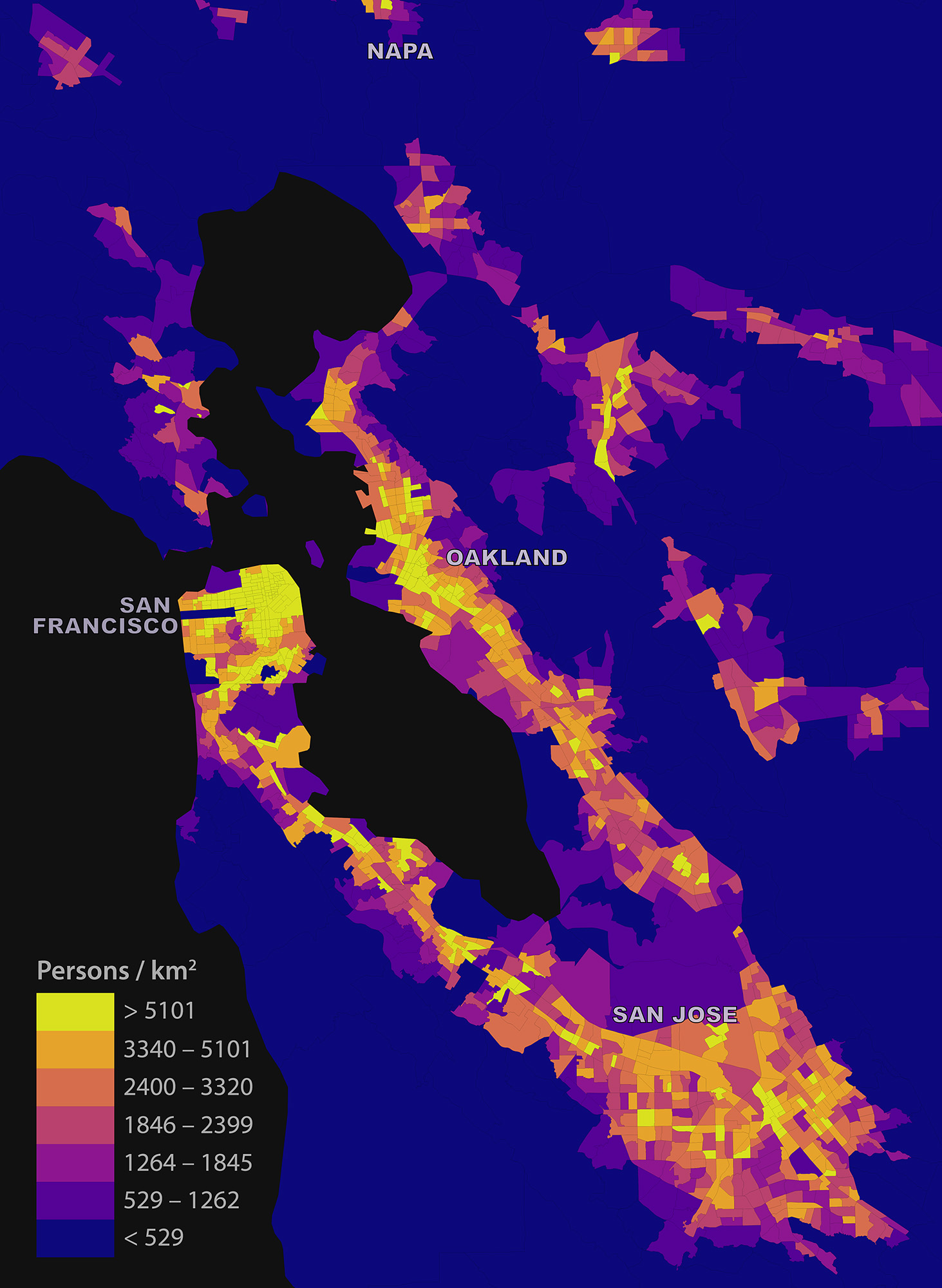I recently teamed up with an international group of public health researchers and spatial analysts to co-author an article, An Introduction to Software Tools, Data, and Services for Geospatial Analysis of Stroke Services, that has been accepted for publication at Frontiers in Neurology (download free PDF).
Tag: neighborhood
US Street Network Models and Measures
My new article, “Street Network Models and Measures for Every U.S. City, County, Urbanized Area, Census Tract, and Zillow-Defined Neighborhood” has been published in Urban Science. This paper reports results from a broader project that collected raw street network data from OpenStreetMap using the Python-based OSMnx software for every U.S. city and town, county, urbanized area, census tract, and Zillow-defined neighborhood boundary. It constructed nonplanar directed multigraphs for each and analyzed their structural and morphological characteristics.
The resulting public data repository contains over 110,000 processed, cleaned street network graphs (which in turn comprise over 55 million nodes and over 137 million edges) at various scales—comprehensively covering the entire U.S.—archived as reusable open-source GraphML files, node/edge lists, and ESRI shapefiles that can be immediately loaded and analyzed in standard tools such as ArcGIS, QGIS, NetworkX, graph-tool, igraph, or Gephi.
My article, Measuring the Complexity of Urban Form and Design, is now in-press for publication at Urban Design International (download free PDF). Cities are complex systems composed of many human agents interacting in physical urban space. This paper develops a typology of measures and indicators for assessing the physical complexity of the built environment at the scale of urban design. It extends quantitative measures from city planning, network science, ecosystems studies, fractal geometry, statistical physics, and information theory to the analysis of urban form and qualitative human experience.
My article, “A Multi-Scale Analysis of 27,000 Urban Street Networks: Every US City, Town, Urbanized Area, and Zillow Neighborhood,” was recently published in Environment and Planning B: Urban Analytics and City Science. This study uses OSMnx to download and analyze 27,000 street networks from OpenStreetMap at metropolitan, municipal, and neighborhood scales – namely, every US city and town, census urbanized area, and Zillow-defined neighborhood. It illustrates the use of OSMnx and OpenStreetMap to consistently conduct street network analysis with extremely large sample sizes, with clearly defined network definitions and extents for reproducibility, and using nonplanar, directed graphs.
These 27,000 street networks as well as their measures have been shared in a free public repository at the Harvard Dataverse for anyone to re-purpose. This study’s empirical findings emphasize measures relevant to graph theory, transportation, urban design, and morphology, such as structure, connectedness, density, centrality, and resilience. It uses graph Maximum Betweenness Centrality and Average Node Connectivity to examine how “resilient” a street network is, in terms of how reliant it is on important nodes and how easy it is to disconnect it.
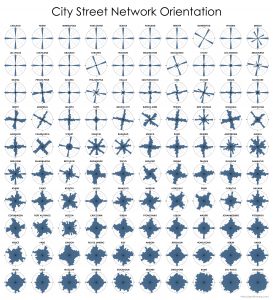 This post is adapted from this research paper that you can read/cite for more info. It analyzes and visualizes 100 cities around the world.
This post is adapted from this research paper that you can read/cite for more info. It analyzes and visualizes 100 cities around the world.
By popular request, this is a quick follow-up to this post comparing the orientation of streets in 25 US cities using Python and OSMnx. Here are 25 more cities around the world:
Estimating Daytime Density in RSRS
My short article “Estimating Local Daytime Population Density from Census and Payroll Data” is out now in the latest issue of Regional Studies, Regional Science. I discuss a method for estimating local daytime density across a metropolitan area using US Census and LEHD LODES data, and dig into some limitations and biases. I look at the San Francisco Bay Area as a case study:
OSMnx Features Round-Up
OSMnx is a Python package for quickly and easily downloading, modeling, analyzing, and visualizing street networks and other spatial data from OpenStreetMap. Here’s a quick round-up of recent updates to OSMnx. I’ll try to keep this up to date as a single reference source. A lot of new features have appeared in the past few months, and people have been asking about what’s new and what’s possible. You can:
- Download and model street networks or other networked infrastructure anywhere in the world with a single line of code
- Download any other spatial geometries, place boundaries, building footprints, or points of interest as a GeoDataFrame
- Download by city name, polygon, bounding box, or point/address + network distance
- Download drivable, walkable, bikeable, or all street networks
- Download node elevations and calculate edge grades (inclines)
- Impute missing speeds and calculate graph edge travel times
- Simplify and correct the network’s topology to clean-up nodes and consolidate intersections
- Fast map-matching of points, routes, or trajectories to nearest graph edges or nodes
- Save networks to disk as shapefiles, geopackages, and GraphML
- Save/load street network to/from a local .osm xml file
- Conduct topological and spatial analyses to automatically calculate dozens of indicators
- Calculate and visualize street bearings and orientations
- Calculate and visualize shortest-path routes that minimize distance, travel time, elevation, etc
- Visualize street networks as a static map or interactive leaflet web map
- Visualize travel distance and travel time with isoline and isochrone maps
- Plot figure-ground diagrams of street networks and building footprints
Street Network Orientation
OSMnx is a Python package for easily downloading and analyzing street networks anywhere in the world. Among other analyses, we can use it to explore street network orientation. That is, what are the bearings and spatial orientations of the streets in the network? All of the code for this example is in this GitHub notebook. First we use OSMnx to download the street network of Moraga, California, a small town in the hills just east of Berkeley:
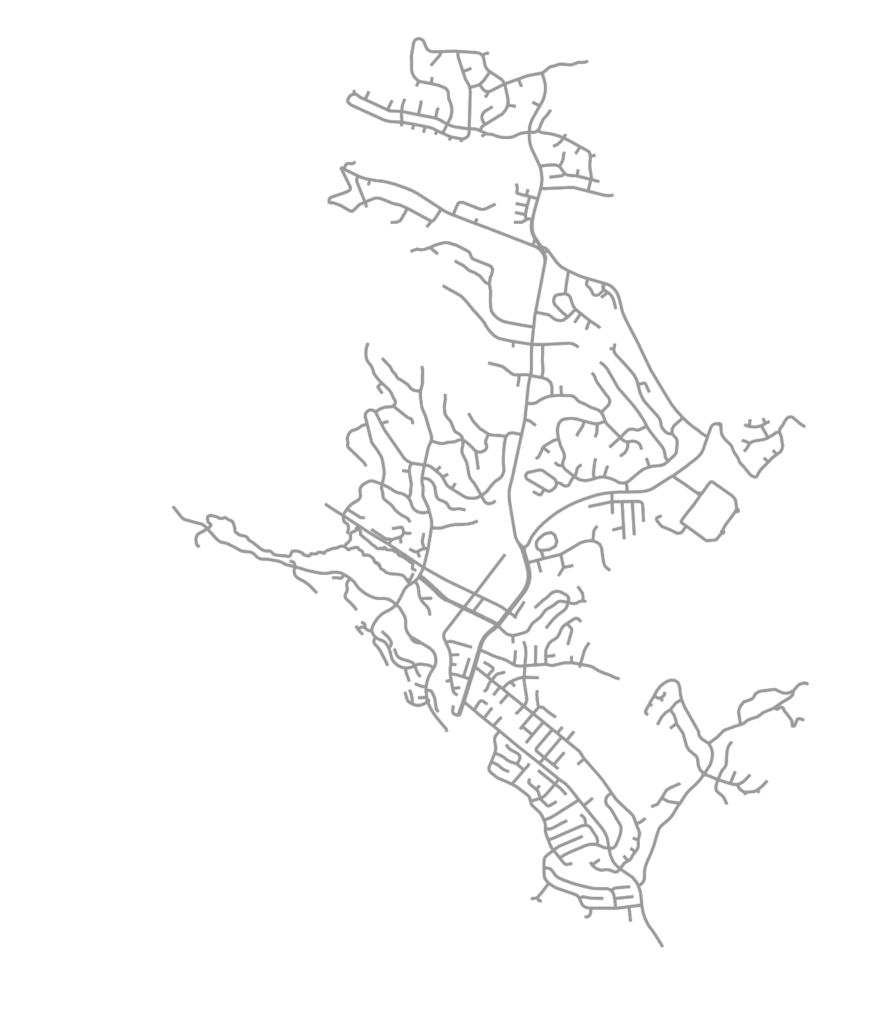
OSMnx automatically calculates all of the streets’ bearings. Specifically it calculates the compass bearing from each directed edge’s origin node u to its destination node v. Now we can visualize these bearings, binned together as a histogram to get a sense of the relative frequency of the streets’ spatial orientations. Or better yet, we can project that histogram as a polar plot to match the compass bearings:
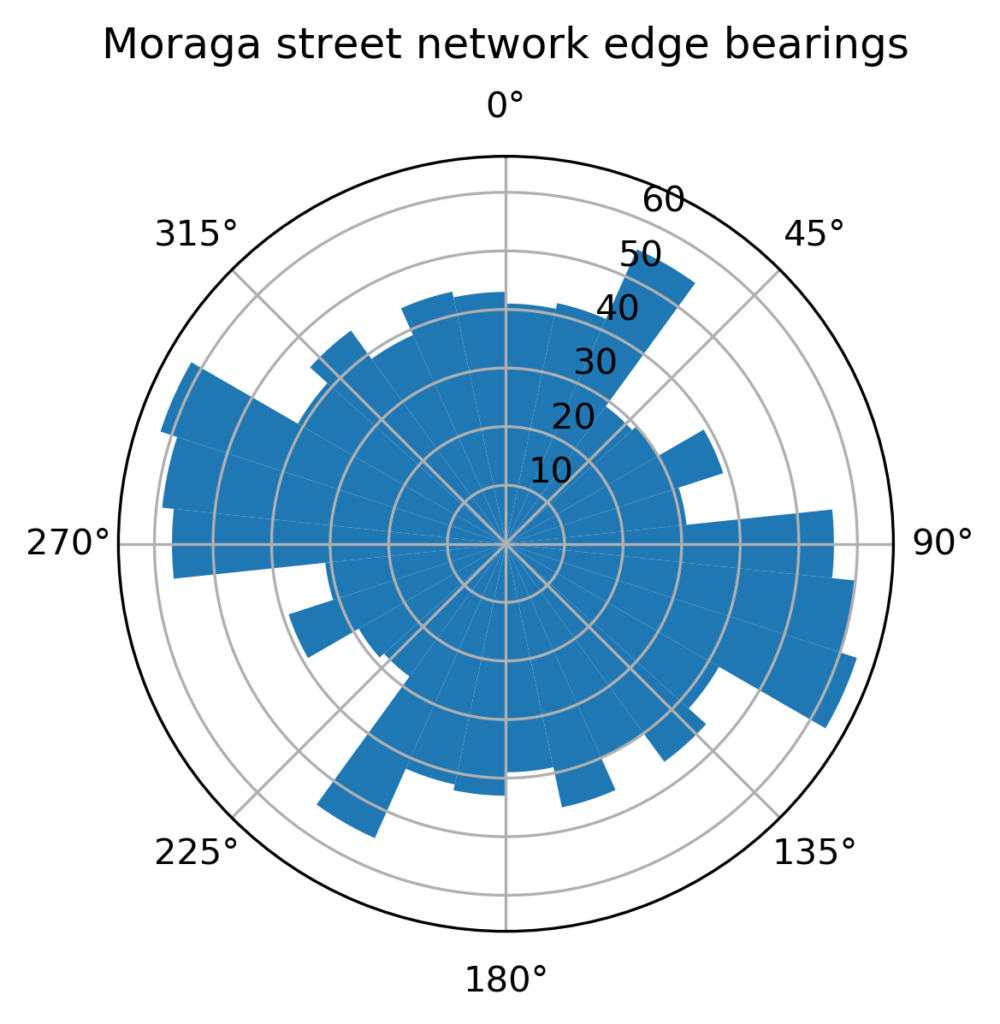
Our article “New Insights into Rental Housing Markets across the United States: Web Scraping and Analyzing Craigslist Rental Listings” is finally appearing in print in the Journal of Planning Education and Research‘s forthcoming winter issue. We collected, validated, and analyzed 11 million Craigslist rental listings to discover fine-grained patterns across metropolitan housing markets in the United States.
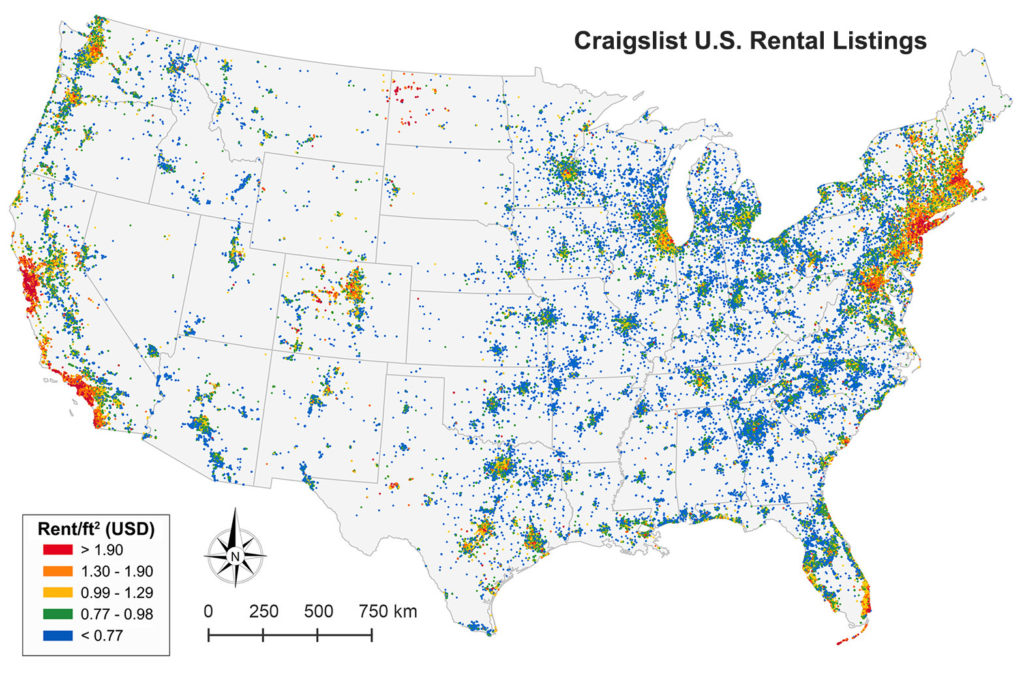
New Article: OSMnx in CEUS
My article “OSMnx: New methods for acquiring, constructing, analyzing, and visualizing complex street networks” was published in the journal Computers, Environment and Urban Systems earlier this month. OSMnx is a Python package that lets you download a street network anywhere in the world at any scale with a single line of code, then analyze or visualize it with one more line of code.
